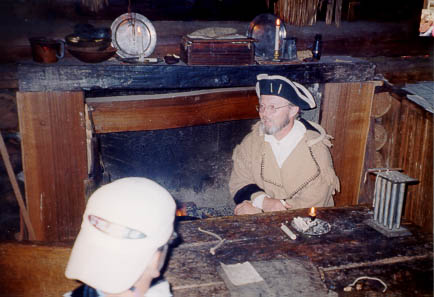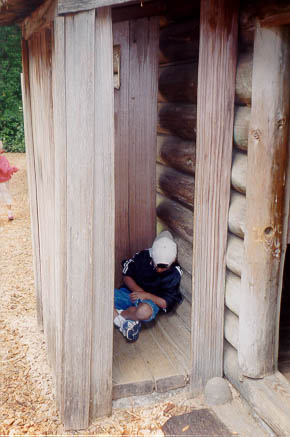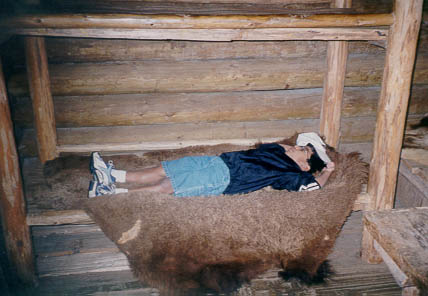
|

|
Lewis and Clark named their winter quarters of 1805-6 after the friendly local Native American tribe, the Clatsops. The Fort was the Corps of Discovery's home for three months. The replica of the Fort was built in the 1950s.

|
You can see one of the wooden chimneys in background. The National Park Service has a fire going in the Captain's Quarters because it was cold for August (60 degrees) and damp.

|
Just to right of Scott's hat, you can see the glow of coals in the fireplace. We wanted to stay since it was so toasty and warm!

|

|

|

|

|

|
The Lewis and Clark Expedition had a hard time at Fort Clatsop. It rained 94 days of the 106 days they stayed here! Everything rotted from the dampness including their clothes. Fleas infested the furs and hides of the bedding. They were miserable with rheumatism and colds from the cold, damp weather.

|
Lots of spanish moss on trees is evidence of the very wet climate on the coast of Oregon. One resident of the coast said to me, "We think 70 degrees is hot!" It can be 65 and damp on the Oregon coast and 90, sunny and dry sixty miles east in Portland.
Many of the Corps of Discovery wanted to live inland in a better climate, but the Captains Lewis and Clark wanted to live by the coast with the hope of hearing of the arrival of an European ship which could give them passage back home. Though a ship was in the area, the Captains never heard any word. Therefore, the Corps of Discovery had to make the long trip back to Saint Louis, Missouri, by foot, horse and canoe.